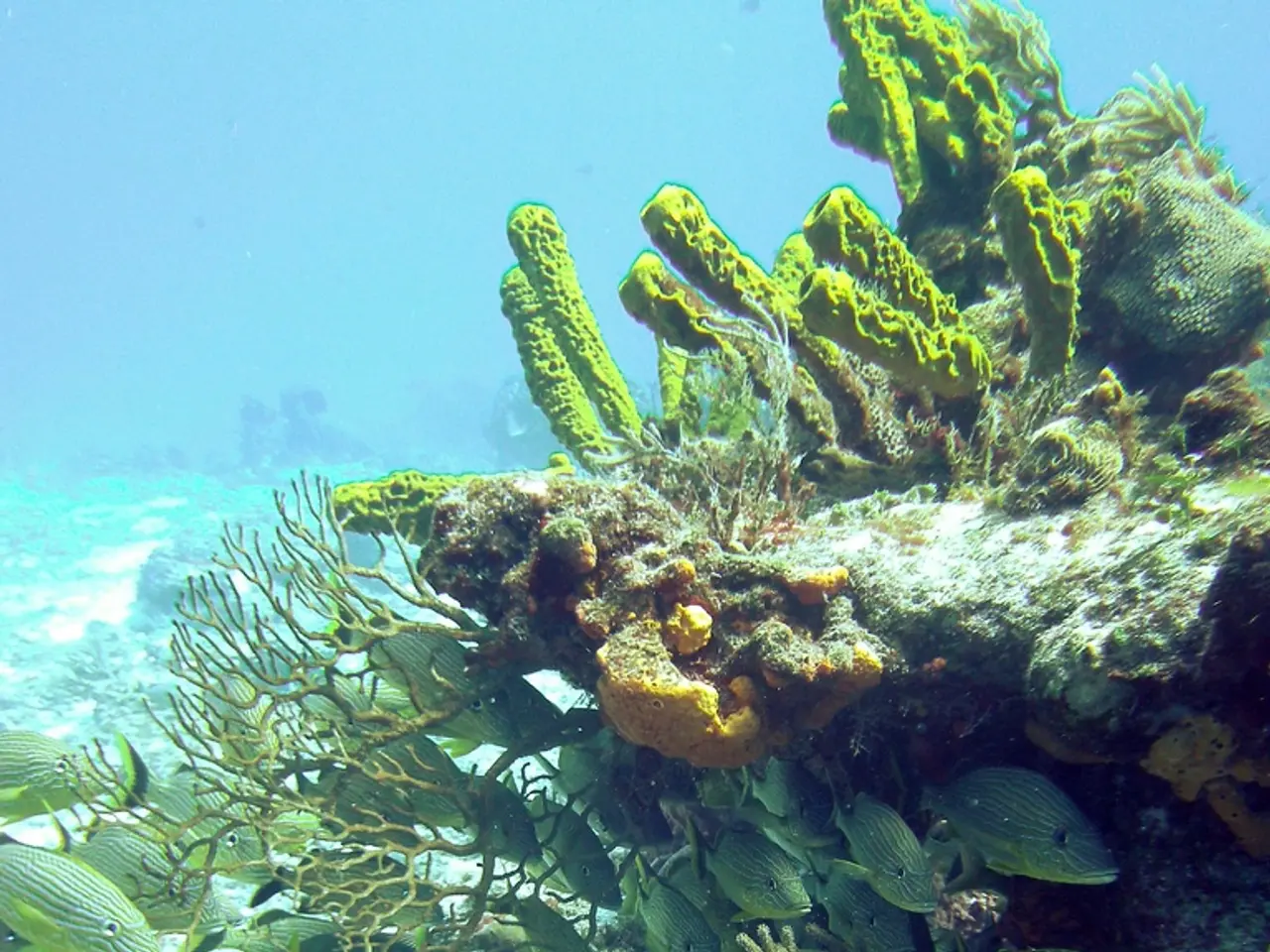Scientists from Scripps have visualized the deep magma layers beneath a Pacific volcano's seafloor.
Breakthrough in Understanding Magma Formation at Mid-Ocean Ridges
In a groundbreaking discovery, scientists at the Scripps Institution of Oceanography have used electromagnetic technology to visualize the formation of magma at the northern East Pacific Rise, a seafloor volcano and part of the largest and most active chain of volcanoes in the solar system [1].
The study, supported by the National Science Foundation and the Seafloor Electromagnetic Methods Consortium at Scripps, was published in the March 28 issue of the journal Nature. The data for the study was obtained during a 2004 field study conducted aboard the research vessel Roger Revelle, which is operated by Scripps and owned by the U.S. Navy.
The northern East Pacific Rise is an area where two of the planet's tectonic plates are spreading apart from each other. As the plates diverge, mantle rock beneath the oceanic crust decompresses and partially melts to generate the magma that forms new oceanic crust [2].
The marine electromagnetic technology used in the study was originally developed by Charles "Chip" Cox and his student Jean Filloux in the 1960s at Scripps. This technology maps the distribution and movement of molten material by detecting variations in the Earth's electromagnetic fields caused by the presence of magma. Such imaging enables scientists to infer the pathways and concentrations of melt in the mantle, enhancing understanding of magma dynamics and the creation of oceanic crust [2].
Lead author of the study, Kerry Key, believes that the insights provided by electromagnetics will continue to grow as the technology matures and data analysis techniques improve. Key states that mantle upwelling beneath the mid-ocean ridge creates a deeper and broader melting region than previously thought [3].
The cross-section area of the melting region mapped in the image is comparable to the size of San Diego County. Key also has future plans to apply electromagnetic technology to map subglacial lakes and groundwater in the polar regions [4].
The Scripps Marine Electromagnetics Laboratory currently supports five graduate student researchers and five full-time staff. The paper's coauthors include Lijun Liu of the University of Illinois and Anne Pommier of Arizona State University [5].
More information about this project and the Scripps Marine Electromagnetics Laboratory can be found at: http://marineemlab.ourwebsite/Projects/EPR2004
[1] Magma at mid-ocean ridges originates from the Earth's mantle beneath the oceanic crust, where mantle rock partially melts due to decompression as tectonic plates diverge. [2] The study's findings were published in the March 28 issue of the journal Nature. [3] Kerry Key, lead author of the study, states that mantle upwelling beneath the mid-ocean ridge creates a deeper and broader melting region than previously thought. [4] Key also has future plans to apply electromagnetic technology to map subglacial lakes and groundwater in the polar regions. [5] The Scripps Marine Electromagnetics Laboratory currently supports five graduate student researchers and five full-time staff.
- This groundbreaking discovery in understanding magma formation at mid-ocean ridges involves the application of technology in the field of both environmental science and space and astronomy.
- As technology in the science of environmental-science, particularly marine electromagnetics, advances and improves data analysis techniques, the potential for further insights into the creation of oceanic crust and other Earth phenomena becomes increasingly significant.




